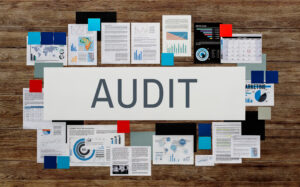What Is Risk-Based Thinking and Why It Matters
Risk-based thinking is more than a procedural requirement; it’s a mindset shift that organizations must embrace to survive and thrive. Defined within ISO standards such as ISO 9001 and ISO 14001, risk-based thinking requires organizations to proactively identify and address potential threats and opportunities that could impact their ability to achieve objectives. The concept is not new.
In one of my early consulting projects in the manufacturing industry, I was part of a team helping a small machine shop align their operations with ISO 9001. Though certified, they lacked a framework for anticipating quality failures. The real issue wasn’t poor workmanship, it was the absence of a proactive, structured way to assess and mitigate risks. This experience drove home the importance of risk-based thinking not just as a compliance checkbox, but as a strategic advantage.
Cost of Non-Compliance vs. Cost of Reactive Management
Organizations that adopt ISO standards sometimes focus narrowly on compliance. But the greater cost comes not from failing an audit, but from waiting until something goes wrong.
Compliance-related penalties (e.g., fines, sanctions) are visible and immediate. But the costs of reactive management; lost time, rushed fixes, disrupted operations are often far greater and longer lasting.
ISO standards advocate for preventive planning over reactive response. Clause 6 of ISO 9001, for instance, requires organizations to “determine risks and opportunities that need to be addressed” to ensure the quality management system achieves its intended results.
Types of Risks in Organizations
ISO management system standards recognize that risks come in different forms and require different strategies to address. Two of the most significant categories are:
Strategic Risks
Strategic risks are long-term and affect the organization’s mission, vision, and market position. ISO identifies these as risks that could:
- Derail the achievement of objectives
- Misalign the organization’s purpose with stakeholder needs
- Affect the viability of the business model
Examples include:
- Entering a new market without proper analysis
- Failing to adapt to climate and other regulations
- Shifting away from customer-focused innovation
Strategic risks require top-level leadership engagement and often intersect with broader governance and environmental planning efforts.
Operational Risks
These are day-to-day risks that affect how work gets done. ISO links operational risks to the “performance of processes” and the “delivery of conforming products and services”. They are typically localized, immediate, and easier to control.
Examples include:
- Machine breakdowns
- Supplier delays
- Human errors in production or inspection
Operational risks are typically owned by middle managers or process owners and require timely mitigation using process controls, training, and monitoring.
Emerging Risks: Cybersecurity, Supply Chain, and ESG
In line with Clause 4 (Context of the Organization), ISO encourages awareness of external and emerging risks, including:
- Cybersecurity threats (especially relevant in ISO 27001)
- Supply chain instability due to geopolitical shifts or pandemics (relevant in ISO 28000)
- Environmental, Social, and Governance (ESG) trends influencing investor and consumer behavior
Organizations that fail to anticipate and plan for these types of risks often experience cascading failures that affect both strategic and operational layers.
Direct Costs of Ignoring Risk
The financial impact of ignoring risks shows up quickly and painfully:
- Product Recalls
In one renowned case, a food manufacturer lacked robust supplier risk assessments. A contaminated ingredient batch led to a full product recall. The consequences weren’t limited to the cost of disposal and refunds; it included shelf space loss and reputational harm that took months to repair. We have seen similar examples in the medical device industry as well.
- Customer Dissatisfaction
Service businesses often overlook operational inconsistencies. A failure to plan for peak demand or under-trained frontline staff can quickly erode customer satisfaction, leading to loss of loyalty and negative reviews.
- Downtime and Disruption
Ignoring equipment wear-and-tear or failing to conduct proper hazard analyses leads to unplanned downtime. Each hour of disruption in critical industries (e.g., aviation, medical manufacturing) can result in enormous opportunity costs.
Indirect and Long-Term Costs
Ignoring risk-based thinking also causes deep, long-term damage that isn’t always captured in financial statements:
- Brand Erosion
Negative headlines or safety incidents can reduce customer trust overnight. Rebuilding a brand damaged by poor foresight is time-intensive and costly.
- Talent Turnover
Employees want to work in organizations where their safety and professional risks are acknowledged and addressed. If teams feel their concerns are ignored, turnover increases, taking valuable knowledge and continuity with them.
- Innovation Paralysis
In cultures without risk-based thinking, teams are punished for failure rather than rewarded for initiative. This kills innovation. ISO’s emphasis on addressing both risks and opportunities encourages organizations to take calculated, informed risks that drive growth.
How ISO Standards Embed Risk Thinking
ISO standards don’t just encourage risk thinking – they structurally embed it into the management system framework and help reduce operational risks and costs to the manufacturers.
Clause 6: Planning Actions to Address Risks and Opportunities
This clause requires organizations to:
- Identify risks that could affect product conformity or customer satisfaction
- Evaluate their significance
- Plan actions proportionate to their impact
For ISO 14001, this means evaluating risks related to environmental impact. For ISO 9001, it involves risks to product or service quality. The result is a cohesive, organization-wide approach to managing what matters most.
Clauses 9 & 10: Monitoring, Learning, and Improving
Clause 9 (Performance Evaluation) calls for:
- Monitoring whether risk responses were effective
- Auditing risk controls
- Reviewing trends in performance
Clause 10 (Improvement) closes the loop:
- Non-conformities trigger investigations
- Lessons learned from failures feed back into planning
- Risk registers are continuously updated
Together, these clauses help organizations evolve from static compliance to dynamic foresight.
Enabling Risk Thinking in Teams
Risk-based thinking must live beyond the boardroom. Empowering operational teams is essential:
Training in Early Detection
Teams should be trained to identify weak signals—those early indicators that something might go wrong. In a plant I worked with, rising absenteeism flagged deeper issues in work conditions, preventing a potential labor crisis.
Using Root Cause Analysis Proactively
RCA tools such as the Ishikawa diagrams shouldn’t be limited to incident response. Used proactively, they can prevent escalation of small issues into systemic failures.
Cross-Functional Risk Reviews
Risks often span functions. A procurement delay can become a customer complaint; a security loophole can become a safety incident. Cross-functional reviews foster transparency and collaboration, encouraging joint ownership of risk.
Conclusion: From Firefighting to Foresight
Risk-based thinking is not just a best practice; it’s a competitive advantage. Organizations that wait for risks to materialize will always be in “firefighting” mode, while those who embrace foresight will innovate, adapt, and grow.
As ISO continues to evolve, so must we. Risk is no longer something to avoid, it is a lens through which future-focused organizations make better decisions. ISO helps lay that foundation. The rest is up to us.
—
About the Author
This article was written by Inderjit “IJ” Arora, Chairman, Board of Directors at QMII. With more than 30 years’ experience spanning military service, merchant marine and civilian industries, he is an Exemplar Global-certified lead auditor and member of the U.S. TAG to ISO/TC 176 (the ISO 9000 family of standards). IJ holds an MBA from The College of William & Mary and an MSc in Defense Studies, and he brings a unique leadership and crisis-management background into quality systems consulting. He specialises in transforming management-system certification into a strategic advantage for organisations.




